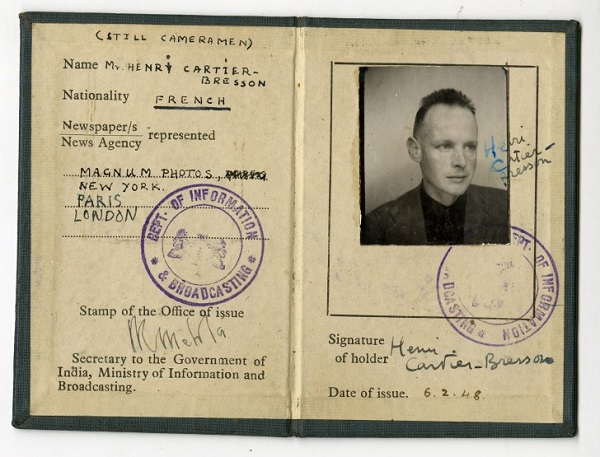
French artist Henri Cartier-Bresson thought that sensitivity was the most necessary requirement for taking good photographs, or in fact, making good art.
He believed that pictures were “composed in the camera.” And for this reason, he never cropped his work. “I don’t take the photograph, the photograph takes me,” he said in a 2000 interview with Charlie Rose. Always gracious and modest, Cartier-Bresson saw “success [as being] dangerous.”
A photographer who didn’t like to be photographed because of his fame, his work spoke volumes about his innate talent.
Henri Cartier-Bresson, FRANCE. Paris. Place de l’Europe. Gare Saint Lazare, (1932).
Image: © Henri Cartier-Bresson/Magnum Photos. Courtesy artnet.
Known as the father of modern photojournalism, Cartier-Bresson chronicled the lives of people around the globe, with a seemingly prophetic ability to capture striking images. Along with contemporaries Robert Capa, David Seymour and others, Cartier-Bresson founded Magnum Photos in 1947.
“Magnum is a community of thought, a shared human quality, a curiosity about what is going on in the world, a respect for what is going on and a desire to transcribe it visually,” he has said of the cooperative agency.
Henri Cartier-Bresson, Photograph of Alberto Giacommetti.
Image: Wikipedia.
The artist states in the introduction of his book The Decisive Moment: “Photography is the simultaneous recognition, in a fraction of a second, of the significance of an event as well as of a precise organisation of forms which give that event its proper expression.” (His friend, Henri Matisse, designed the cover below).
He wrote, “In photography, there is a new kind of plasticity, the product of instantaneous lines made by movements of the subject. We work in unison with movement as though it were a presentiment of the way in which life itself unfolds. But inside movement there is one moment at which the elements in motion are in balance. Photography must seize upon this moment and hold immobile the equilibrium of it.”
The legendary French photographer would turn 107 years old today.
Listen to the master reveal his process is this archival interview below.